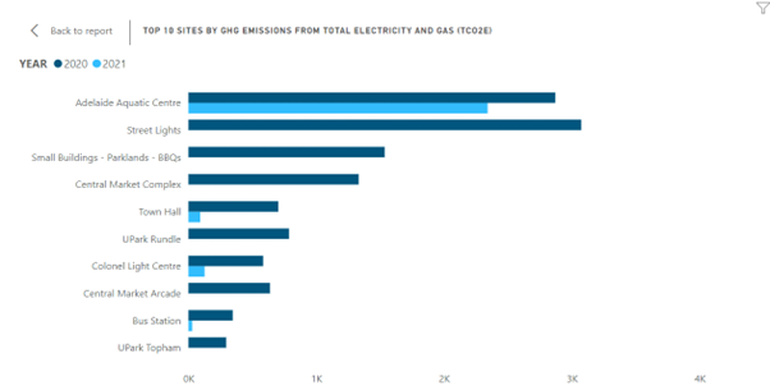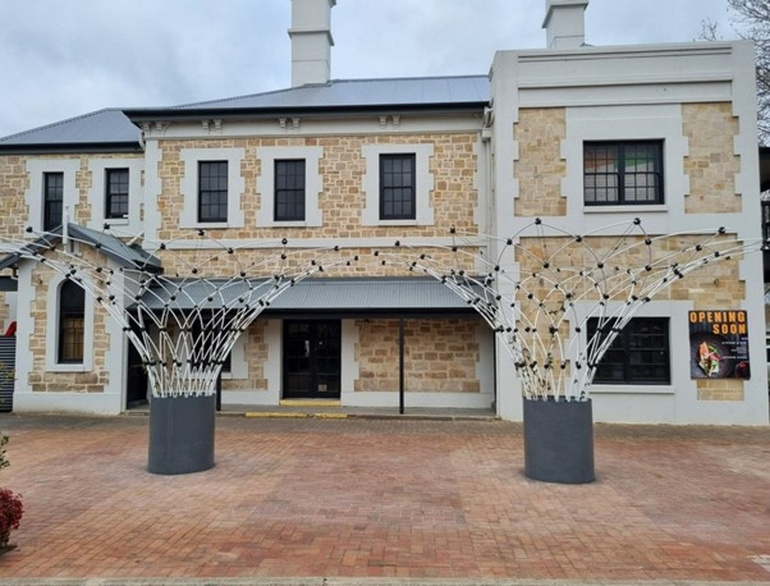How City of Adelaide is taking the heat off its changing climate
26 Sep 2022
While Adelaide has been experiencing growth in local tourism and is known for its premier food, wine and festivals throughout the long summer, it is also contending with the early effects of climate change. We spoke to Clare Mockler, CEO from City of Adelaide to find out how Council is mitigating, adapting, and responding to the warming climate.
In January 2019 when Australia experienced its hottest month ever, Adelaide broke its own record high temperature by reaching 46.6°C in the CBD, and recent research from the University of Adelaide shows heatwaves like this place significant strain on local hospitals and the health of the city’s residents.
As the first council in South Australia to adopt a corporate Climate Change Risk Adaptation Action Plan, City of Adelaide is on the front foot in its response to heatwaves and recognises that the global climate challenge is an opportunity to realise the benefits of a decarbonised economy. Here are just a few ways the City of Adelaide is creating a cleaner, greener, more resilient city that is comfortable and healthy for all.
1. A city playing its part
The City of Adelaide community has a shared ambition to make Adelaide a carbon neutral city, a goal announced in 2015 and followed by a joint State and local government action plan that was showcased at the United Nations climate conference in Paris.
Since then, the City of Adelaide has achieved carbon neutrality in their own operations, and fostered an active and vibrant community that are leading low carbon economic activity in the city. Recent figures show the gains made in their own operations, which add up to a 57% decrease from FY2018/19, primarily through a 100% renewable electricity contract.
The broader community is also heading towards a decarbonised future, with 21% reductions in greenhouse gas emissions during a period of economic growth.

2. Cooling the city
Like many cities around the world, Adelaide’s sweltering summers are compounded by the urban heat island effect where urban environments - including buildings, roads and bare space - cause an artificial temperature rise to already hot conditions. City of Adelaide is helping to take the heat off with a mix of greening and cooling projects to create shade, absorb heat and reduce the temperature of surfaces.
Partnering with Climate KIC Australia and the South Australian Department for Environment and Water, Council’s City of Adelaide’s Cool Road Adelaide initiative tested materials on roads and pavements that reduce heat absorption and make surrounding areas cooler. The trial period found that widespread use of the most effective sealant tested could generate a near 1°C surface cooling at a whole of city scale. See more of the project’s findings here.
When it comes to its own assets, City of Adelaide is working with the University of Adelaide to trial cool roofs on two of its buildings over the 2022/2023 summer, “These results will help us make decisions about building materials in the future, equipping us with local verified data to use when engaging the community, developers and partners in relation to adapting buildings and our city to climate change,” says Clare.

Urban greening has countless benefits for people and the environment and City of Adelaide has committed one million dollars to green specific CBD streets based on heat and tree canopy mapping in the Business Plan and Budget for 2022/23.
Creating a connection to nature for residents isn’t new to City of Adelaide and it runs much deeper than putting a few plants in the ground; it requires careful planning and clever design. “For us, greening is taking many forms including living architecture on and around existing structures, urban food in public and communal spaces and water sensitive design”, says Clare.
3. Greener, healthier buildings
With the built environment contributing 39% of the world’s carbon emissions, City of Adelaide is actively supporting owners, tenants and property managers to reduce their own emissions through its sustainable incentives scheme.
The scheme provides financial incentives for sustainable technology installation in apartments, houses and commercial buildings to improve energy and water performance and includes up to $5,000 for NABERS or Green Star certification.
"As is the case for certified projects around the country, for tenants and owners, the benefits of this scheme include greater energy efficiency, lower costs and even higher property values. More broadly, building users and the wider community benefit from healthier spaces with better amenities, cleaner air, and lower emissions," explained Clare.
There are also several exciting Green Star projects on the horizon within the local government area spanning office buildings, health facilities and mixed-use space including the redevelopment of Market Square which is targeting 6 Star Green Star Design & As Built certification and is set to become South Australia’s first all-electric office building.

City of Adelaide is currently developing its latest Climate Action Plan, following extensive community consultation. Hundreds of locals provided comments that were overwhelmingly in favour of continued action, with support from a diverse range of businesses who are innovating and collaborating towards emissions reductions in the city.
We look forward to reading and sharing the action plan later this year. You can follow its progress here.